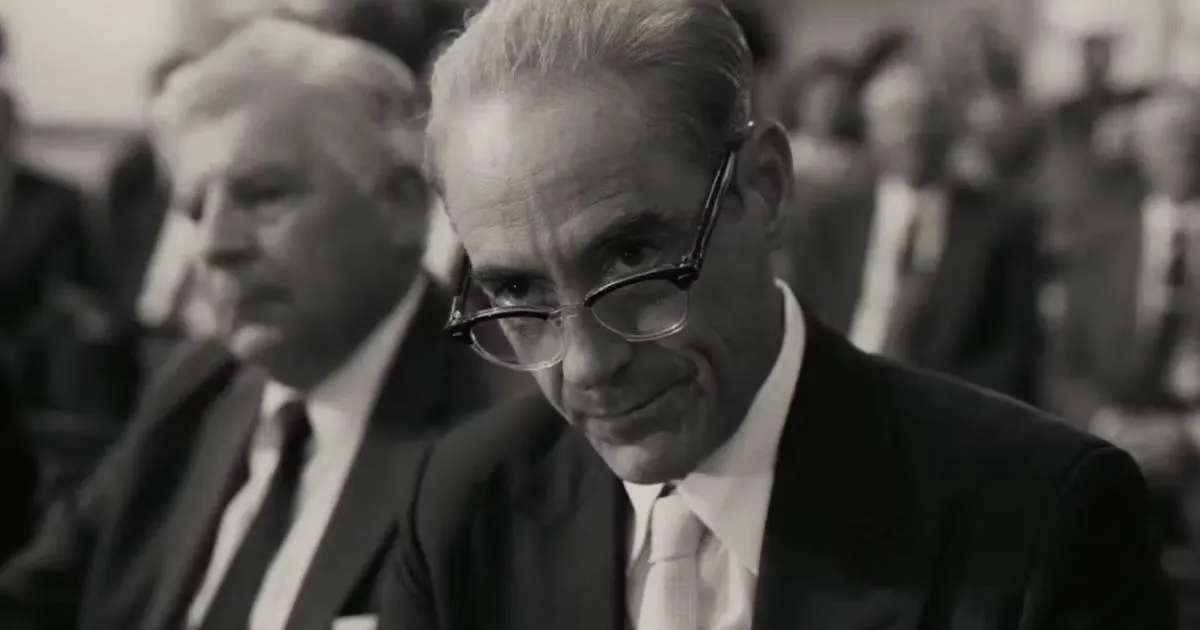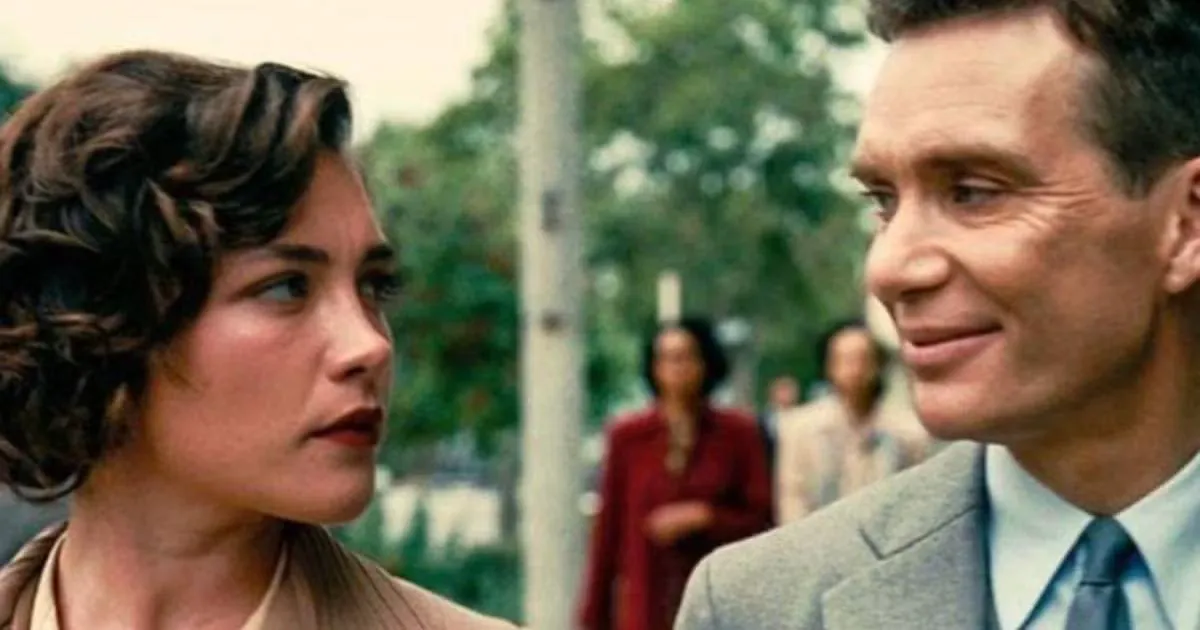ext, formatted iUnquestionably, “Oppenheimer” stands out as one of the cinematic highlights of the year. But how closely does it mirror the real-life narrative of J. Robert Oppenheimer?
Christopher Nolan’s highly anticipated epic, “Oppenheimer,” has finally graced the screens. This film delves into the life of J. Robert Oppenheimer (played by Cillian Murphy), exploring the trials and tribulations faced by the theoretical physicist during the Manhattan Project—a U.S. government initiative focused on developing and testing the world’s first nuclear weapons. Their work culminated in the “Trinity” test in Los Alamos, New Mexico, marking the first recorded nuclear explosion.
The film is primarily adapted from “American Prometheus,” the exhaustive biography of Robert Oppenheimer by Kai Bird and Martin J. Sherwin. Much of the book explores Oppenheimer’s life before the Manhattan Project, as well as his role in the political arena regarding the use of nuclear energy after the atomic bombings. Nolan has masterfully condensed this hefty biography into a coherent film, ensuring a remarkably faithful and accurate depiction of Oppenheimer’s work and life.

The Genesis of the Manhattan Project
The film accurately portrays the inception of the Manhattan Project. The narrative tension begins when Lieutenant General Leslie Groves (Matt Damon), the director of the Manhattan Project, recruits Oppenheimer. Groves is aware that German scientists have already discovered nuclear fission and are likely on the verge of developing an atomic bomb. Consequently, he is willing to overlook Oppenheimer’s lack of administrative experience and his personal connections to communist sympathizers. Together, they establish a clandestine laboratory in Los Alamos, New Mexico, to safely test the bombs away from public scrutiny, and Oppenheimer is granted full security clearance.
The movie accurately reflects the historical events, depicting their success in creating the atomic bomb and its successful detonation during the Trinity test. Subsequently, most of the scientists were dispatched to the United States Atomic Energy Commission established by President Harry Truman. However, in 1954, amid concerns that the Soviet Union would develop nuclear weapons, Lewis Strauss (Robert Downey Jr.) pushed for the creation of the hydrogen bomb to demonstrate force. Oppenheimer hoped to promote safety through the United Nations to avoid an arms race, but he rejected the idea, not believing the hydrogen bomb was necessary and worried about its moral costs.
The film also accurately presents Strauss’s hostility towards Oppenheimer. The rivalry and conflict between the two continued, and Strauss deeply suspected Oppenheimer’s relationship with communists, which ultimately led to his security clearance being revoked, effectively ending his role in government and policy.

The Contentious Relationship with Lewis Strauss
One of the central relationships explored in Nolan’s film is the rivalry between Oppenheimer and Lewis Strauss (Robert Downey Jr.), the chairman of the Atomic Energy Commission. In reality, the two men frequently clashed. As depicted in the film, much of Strauss’s animosity stemmed from a public hearing in 1949, during which Oppenheimer ridiculed Strauss’s response regarding radioactive isotopes.
Strauss’s identity as a conservative Republican further fueled the situation. He harbored deep suspicions about Oppenheimer and his connections to communism. This ultimately led Strauss to collude with William L. Borden, a congressional staffer, who penned a letter accusing Oppenheimer of being a Soviet agent, leading to the infamous hearing. While it was widely suspected in real life that Strauss had influenced Borden to write the letter, the film definitively confirms this.
The film undeniably takes some dramatic liberties to heighten Strauss’s animosity towards Oppenheimer. Later in the film, Downey Jr.'s Strauss reveals that he witnessed a private meeting between Oppenheimer and Albert Einstein, suspecting that the former was explicitly trying to turn the scientific community against him. In reality, this interaction never occurred.
However, Strauss’s frequent conflicts with the scientific community are well-documented, ultimately leading to his failed Senate cabinet confirmation hearing in 1959. Nominated for Secretary of Commerce, the film faithfully depicts how Strauss’s animosity towards Oppenheimer led to intense lobbying by a group of scientists, known as the “last straw committee,” who remained loyal to their mentor. Ultimately, their efforts proved successful, and Strauss became the first cabinet nominee since 1925 to fail confirmation, effectively ending his career in government.

Personal Relationships and Communist Ties
Nolan successfully dramatizes the final major element of Oppenheimer’s life: his personal and familial relationships. As previously mentioned, Oppenheimer had multiple connections to communism, as both his brother Frank and his wife Kitty (Emily Blunt) had previously been involved with the Communist Party. As depicted in the film, Oppenheimer donated to numerous progressive causes, including hosting fundraisers for the Republican cause in the Spanish Civil War.
However, most notable is Oppenheimer’s relationship with his mistress, Jean Tatlock (Florence Pugh), with whom he maintained a romantic relationship even after marrying Kitty. She had been identified as a communist, and as a result, Oppenheimer was forced to sever ties with her after receiving security clearance to avoid suspicion. The real Tatlock also committed suicide, as she suffered from clinical depression, although the film directly depicts this as a result of her despair over Oppenheimer leaving her.
Perhaps most historically accurate, however, is how Nolan depicts all the personal relationships that haunted Oppenheimer during his 1953 security review hearing. All these connections to communism led the court to believe that his loyalty to the country was questionable, and as a result, his security clearance was revoked.
Throughout the film, Nolan remains remarkably faithful to the story of Robert Oppenheimer, and while he takes dramatic liberties here and there for the sake of the story, he largely depicts most of the facts correctly.
Conclusion
Overall, “Oppenheimer” is an outstanding film that accurately recreates Oppenheimer’s true story, while also filling the film with emotion and shock through the director’s skillful handling. Audiences can not only feel the importance of historical events, but also gain insight into the inner world of this great scientist. This film is not only a tribute to Oppenheimer, but also a profound meditation on history, science, and emotion.